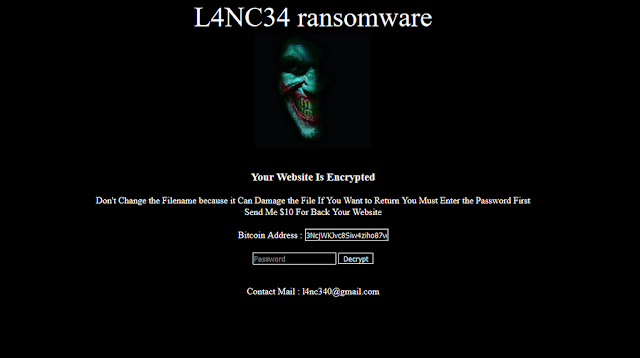
There is no denying the fact that whenever the word ransomware is mentioned computers are an instinctive afterthought to have been largely infected by the same. The impact is without a doubt an extremely serious one and so it always escapes our notice that it’s the websites also that are touched upon by this impact.
Typically this is kind of the reality — however, attackers aren't very similar to each other and not all may have the technical ability or would even attempt to go to such lengths.
Thus as of late, there was a case where the entire website files were apparently encrypted and had their file names changed to affix a ".crypt".
Among the files, we additionally found the ransom note one might usually discover in this type of malware, but this one was somewhat unusual — it wasn't an HTML or a .txt file. Rather, the ransom note was actually located inside a PHP file and appeared to contain actual capacities.
Here is a more critical look at the file.
The code of the malicious PHP file is as follows:
'.base64_decode('PHRpdGxlPkw0TkMzNCBSYW5zb213YXJlPC90aXRsZT4KPGx[pbmsgcmVj[REDACTED BASE64 CODE]dCBNYWlsIDogbDRuYzM0MEBnbWFpbC5jb20=').'
At first glance, nothing looks particularly surprising here, when decoded the result is:
"; } function decdir($dir){ $files = array_diff(scandir($dir), array('.', '..')); foreach($files as $file) { if(is_dir($dir."/".$file)){ decdir($dir."/".$file); }else { decfile($dir."/".$file); } } } decdir($_SERVER['DOCUMENT_ROOT']); echo "Webroot Decrypted
"; unlink($_SERVER['PHP_SELF']); unlink('.htaccess'); copy('htabackup','.htaccess'); echo 'Success !!!'; } else { echo 'Failed Password !!!'; } exit(); } ?>
L4NC34 ransomware

Your Website Is Encrypted
Don't Change the Filename because it Can Damage the File If You Want to Return You Must Enter the Password FirstSend Me $10 For Back Your Website
Bitcoin Address :
Contact Mail:
Now the portions of code responsible for displaying the ransom note, along with the actual decryption process for the files are very clearly visible.
However, this code contains a few specific characteristics that are worth noting.
$input = $_POST['pass']; $pass = "9c6679accb84e3ef938b1f4c24158355"; if(isset($input)) { if(md5($input) == $pass) {
This 'snippet' basically verifies if the password inputted on the page coordinates the hardcoded md5 hash. That appears to be somewhat odd; one may expect that the alleged key was not hardcoded — yet if so, at that point there might be a purpose behind these apparently encrypted files.
This next bit is answerable for the ransomware's file decryption function:
function decfile($filename){ if (strpos($filename, '.crypt')
=== FALSE) { return; } $decrypted =
gzinflate(file_get_contents($filename));
file_put_contents(str_replace('.crypt', '', $filename),
$decrypted); unlink('crypt.php'); unlink('.htaccess');
unlink($filename); echo "$filename Decrypted !!!
";
While there really isn’t anything special or very complex about it. The decryption process just seems to take into account the actual contents of the file and then gzinflate them.
From what is clearly evident here, it’s safe to assume that the only way this hacker “encrypted” the files was to gzdeflate the files and change their file name.
This is what one of the encrypted files looked like:

Backing up to the original ransom note/script and modifying it to execute the decryption function without affecting anything else.
We can go ahead and run it either through a terminal or through the browser directly. And when done so with the following command:
Read more https://www.ehackingnews.com/2020/04/l4nc34-ransomware-teaches-that.html


